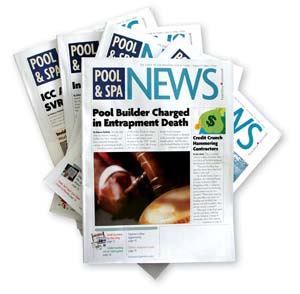It’s official. The Consumer Product Safety Commission will receive federal funding for the residential portion of the Virginia Graeme Baker Pool and Spa Safety Act.
Today, President Barack Obama signed the $410 billion budget plan passed by Congress. From those funds, CPSC will receive $7.28 million to implement the federal pool and spa safety law. Of this, $2 million is designated to reward states that pass their safety legislation while $5 million is for water-safety programs and enforcement of the law.
“The inclusion of these resources…brings us one step closer to preventing drownings of children across the country,” said Rep. Debbie Wasserman Schultz, (D-Fla.) author of the Act. “We don’t know how many children’s lives will be saved, but this will save lives and that’s what’s most important.”
Overall, CPSC saw its budget increase 31 percent to $105 million.
The residential portion of the law does not automatically apply to every backyard pool and spa nationwide. Instead, the Act provides grants for states that pass their own safety legislation. CPSC will oversee the funds, but the agency hasn’t yet determined how much each state could receive.
For a state to qualify, its laws must adhere to minimum guidelines established by the CPSC. The agency released a preliminary draft of those guidelines and accepted public comments, but that section of the Act was tabled when it became clear that funding would not be available until this year. So the agency has yet to release any final guidelines.
The CPSC’s initial draft would have states mandate that all new residential pools have multiple main drains, unblockable drains or a drainless system. SVRSs and other shut-off-type devices could serve as an optional backup.
Additionally, these pools must be equipped with drain covers that meet the testing outlined in ASME/ANSI A112.19.8, unless they have unblockable drains.
The residential part of VGB also has a section on barriers, which states that all pools and spas must have four-sided fencing. The house can serve as one side of the barrier, if the pool has an approved power safety cover or approved alarms are used on all doors. The current draft also says manual covers must be placed over a spa anytime it is not in use.
These requirements will serve as minimums, so state officials can pass more stringent safety bills if desired.
It is not yet known when CPSC will release the final draft.
For more information read the April 15 issue of Pool & Spa News.



